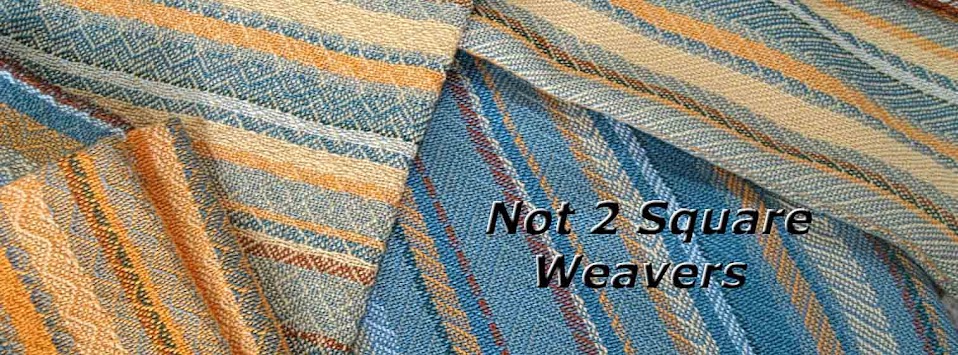This blog post was originally published about 7 years ago and deals with a problem that most weavers encounter - what to do with empty yarn cones. Sure, you can throw them away, but weavers are a thrifty lot and many are uncomfortable with that obvious solution. The search has continued for a better recycling idea.
It turns out that Pinterest has dozens of pinned solutions from many crafters/artists and probably a lot of primary school teachers.
(I had an ulterior motive for reposting this article. Now I have a link to share when I'm handing out free cones.)
Sunday, June 11, 2017
Friday, June 02, 2017
Combining Card Weaving and Regular Weaving
This blog post was written by Not 2 Square member, Wendy-Marie, about a technique she has been wanting to try for a long time.
"This month I tried out combining loom and card weaving. With guidance from Inge Dam’s book Tablet-Woven Accents for Designer Fabrics, I made an experimental piece, 8.5” wide (7” for the loom-woven section and 1.5” for the tablet-woven section). The yarn was 5/2 cotton; sett was 16 epi in the loom section and 2 cards per dent in the tablet section. Inge Dam uses finer yarn, her largest grist being 10/2 cotton.
Since one must turn the tablets as well as change sheds for every pick, it is a time-consuming process, and I thought the same product could have been achieved more easily by making the band separately and sewing it to the cloth. However, I’d like to try one more loom-tablet hybrid using 10/2 cotton."
"This month I tried out combining loom and card weaving. With guidance from Inge Dam’s book Tablet-Woven Accents for Designer Fabrics, I made an experimental piece, 8.5” wide (7” for the loom-woven section and 1.5” for the tablet-woven section). The yarn was 5/2 cotton; sett was 16 epi in the loom section and 2 cards per dent in the tablet section. Inge Dam uses finer yarn, her largest grist being 10/2 cotton.
Some things I learned:
- For the tablet section, the sett is gauged by “cards per dent,” rather than ends per inch.
- The cards are placed behind the reed, so an Ashford loom is not really suitable for this kind of work.
- To hide unsightly white weft at the band border, I found a cloth marker that matched my blue warp, and colored the white speckles blue. (Inge Dam uses a particular card warping method that avoids the weft-at-the-selvedge problem.)
Since one must turn the tablets as well as change sheds for every pick, it is a time-consuming process, and I thought the same product could have been achieved more easily by making the band separately and sewing it to the cloth. However, I’d like to try one more loom-tablet hybrid using 10/2 cotton."
Subscribe to:
Comments (Atom)



